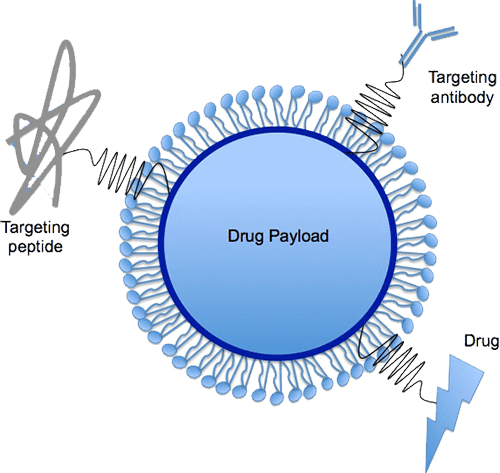LifeTein Lipid Nanoparticles (LNPs)
Ask Me About Lipid Chemistry
Please click here to get a quote for Peptide Lipid Service and Click Chemistry now!


Peptide Utilization with Lipid Nanoparticles:
Lipid nanoparticles (LNPs) represent a promising and versatile platform in nanomedicine. These nanoparticles are composed of lipids, which are organic molecules that include fats and related substances. LNPs have gained significant attention for their ability to encapsulate and deliver a wide range of therapeutic agents, including drugs, nucleic acids, and peptides. Their unique structure allows for efficient encapsulation of hydrophobic compounds within the lipid bilayer, providing protection and improved bioavailability.
Peptides, short chains of amino acids, are essential components in biological processes and have emerged as valuable therapeutic agents. Cell-targeting peptides can be bound to the exterior surface of the LNPs. Incorporating peptides into lipid nanoparticles enhances their stability, solubility, and targeted delivery.
The synergy between peptides and LNPs offers several advantages:
Stabilization and Protection by PEGylation: Peptides can be susceptible to degradation and rapid clearance in the body. Encapsulation within LNPs provides a protective environment, shielding peptides from enzymatic degradation and improving their stability in biological fluids. For your research, try DSPE-PEG(2000) lipid, cholesterol PEG(2000), DMG-PEG(2000) and other clickable lipids.
Enhanced Bioavailability: LNPs facilitate the transport of peptides across biological barriers, such as cell membranes, improving their bioavailability. The lipid bilayer structure of LNPs allows for efficient cellular uptake and intracellular release of peptides, optimizing their therapeutic effects.
Targeted Delivery: Peptide-functionalized LNPs can be designed for targeted delivery to specific cells or tissues. Surface modification with peptides that recognize specific receptors or biomarkers enables precise targeting, reducing off-target effects and enhancing therapeutic efficacy. Click for more linkers and spacers.
Combination Therapy: LNPs provide a versatile platform for the co-delivery of peptides with other therapeutic agents, allowing for combination therapy. This approach can synergize the effects of different therapeutic modalities, addressing multiple aspects of a disease.
Versatility in Formulation: LNPs offer flexibility in formulation, allowing the incorporation of various types of peptides, including antimicrobial peptides, cell-penetrating peptides, and targeting peptides using click chemistry. This versatility enables the tailoring of LNPs to meet the specific requirements of different therapeutic applications.
PEGylated Lipid Alternatives: Polysarcosine (pSar) lipids serve as alternatives to traditional PEGylated lipids for RNA delivery vehicles. The pSar LNPs exhibit enhanced mRNA transfection potency. Examples include N-TETAMINE-pSar45-Maleimide (cas# 2936622-44-3) and 1,2-dimyristoyl-sn-glycero-3-succinyl-N-polysarcosine-25-N-Maleimide (DMG-pSar25 Maleimide).
Discover more about Peptide Drug Conjugation and linkers and spacers.
References:
Discovery of peptides for ligand-mediated delivery of mRNA lipid nanoparticles to cystic fibrosis lung epithelia; Soto, Melissa R. et al. Molecular Therapy Nucleic Acids, Volume 0, Issue 0, 2024, 102375, https://doi.org/10.1016/j.omtn.2024.102375
To determine if peptides discovered through phage display could be incorporated into a nanoparticle system, we used cyclic peptides conjugated to a myristic acid lipid tail (synthesized and N-terminally modified by LifeTein®).
Please click here to get a quote for peptide lipid conjugate service now!

